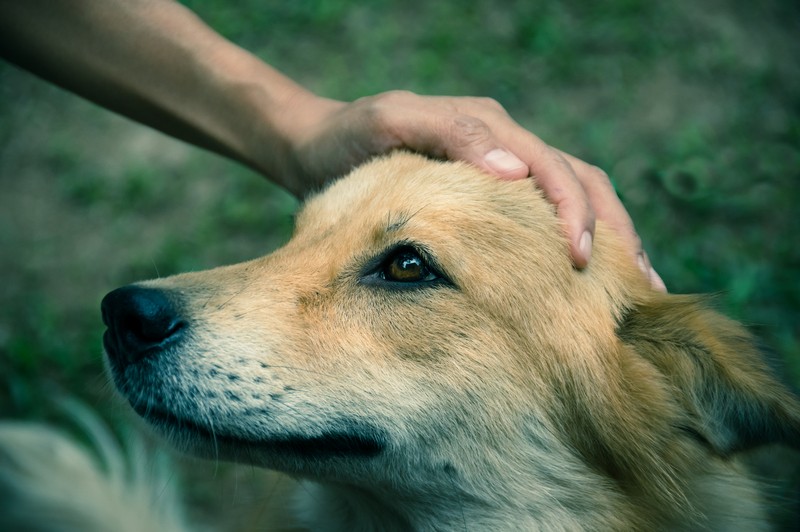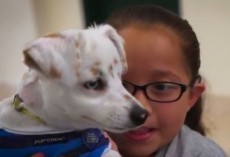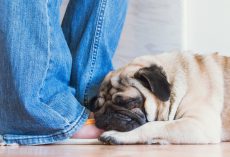Your doggy loves affection but are you giving it the right way? Find out where your pup enjoys being petted!
Owners who are closely bonded to their dogs spend a lot of time being affectionate with their pet because it feels good. As it turns out, there’s a good reason for those good feelings.
Feel-Good Hormones Overflow in Closely Bonded Dogs and Humans
In a Swedish study, researchers found that owners who kissed their dogs frequently had higher levels of oxytocin than other owners.
Based on all the happy hormones surging through the dogs, it’s clear the owners in the second study knew how to touch their pets in a way that maximized their pleasure and contentment. However, that’s not always the case
Have You Ever Wondered How Petting Feels to Your Dog?
Unless you’re carefully observing her as you pet her, it’s easy to inadvertently trigger negative emotions in your dog. Different types of petting, for example, a scratch behind the dog’s ear or a pat on the head, feel pretty much the same to us. The dog, however, isn’t necessarily having the same experience.
Recently, a team of researchers set out to evaluate the physiological and behavioral responses in dogs to determine which types of petting felt good to them, and which didn’t.
How the Study Was Conducted
Each dog was fitted with a heart rate monitor and brought into a room where both the owner and a stranger were present. The owner was instructed to ignore what was going on while the stranger interacted with the dog, touching him or her in nine different ways for 30 seconds at a time.
What the Strokes Evoked
When the dogs were petted on the head or paw, they showed appeasement signals and redirected behaviors. The researchers interpreted those reactions as signs the dogs were uncomfortable.
When the dogs were constrained by being held while lying on the ground, held by the collar, or having their muzzle covered, unsurprisingly, they showed freezing and displacement behaviors. All the dogs also had elevated heart rates — a clear sign of stress.
When the interactions were over, the dogs immediately shook their bodies and stretched, which are signs of relief and further proof they did not enjoy being constrained, no matter how gentle the touch. The touches the dogs liked best?Having their chests and shoulders petted, and getting a nice scratch at the end of the spine just in front of the tail.
Dog Petting Tips
Let your dog initiate contact most of the time, rather than invading his personal space. Some dogs need a little time to settle themselves before getting physically close enough to be touched.
Pet your dog gently on the chest or behind the ear closest to you (to avoid reaching over her head for the other ear). Always avoid petting that involves reaching over or across your dog.
Stop petting your dog after a short time and see if she asks for more, or seems relieved and/or moves away.
By observing your dog’s reaction to physical contact and following his lead, you can enhance your bond with him and forge a more positive relationship.
Having a special bond with your doggy always helps you understand what he likes and dislikes. It's amazing to see how all dogs, although tolerable, don't enjoy affection that involves being constrained. Giving a dog a hug may not be as affectionate is you think it is for Fido! This study made us learn so much!
For more information on this study, visit Healthy Pets.










